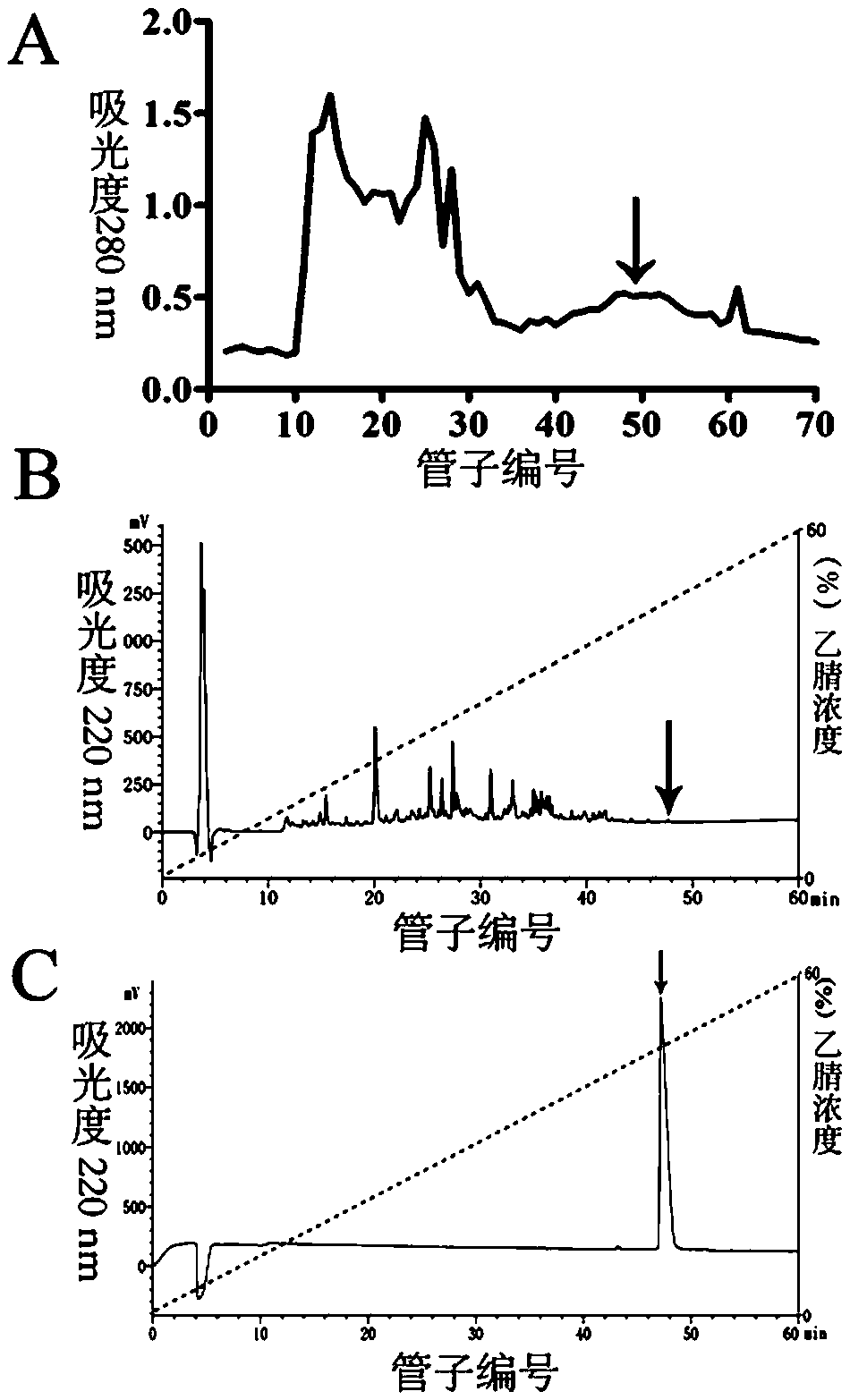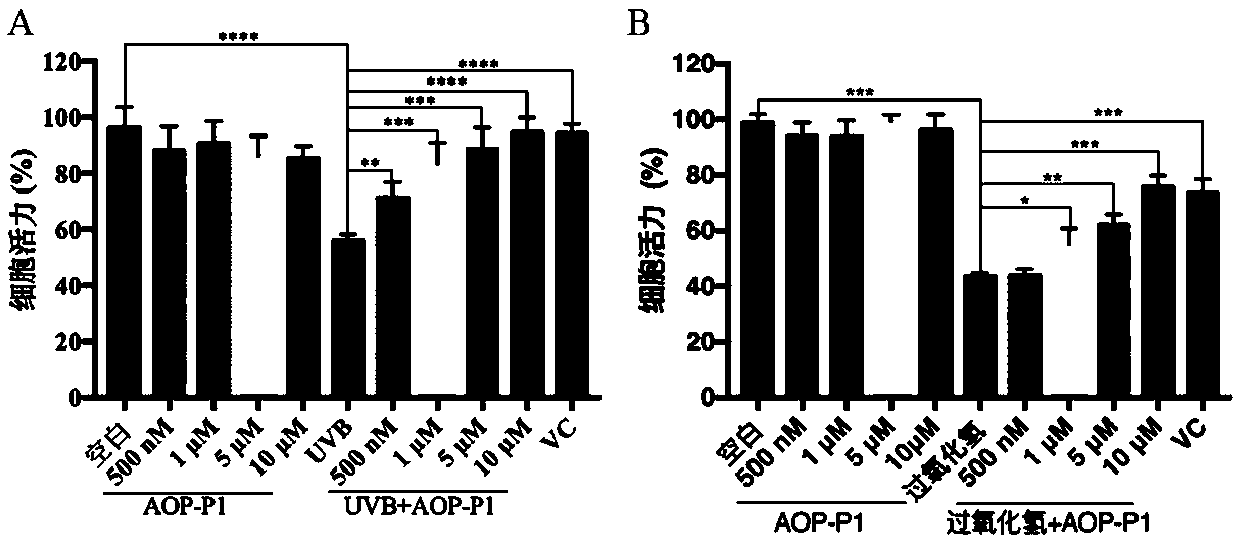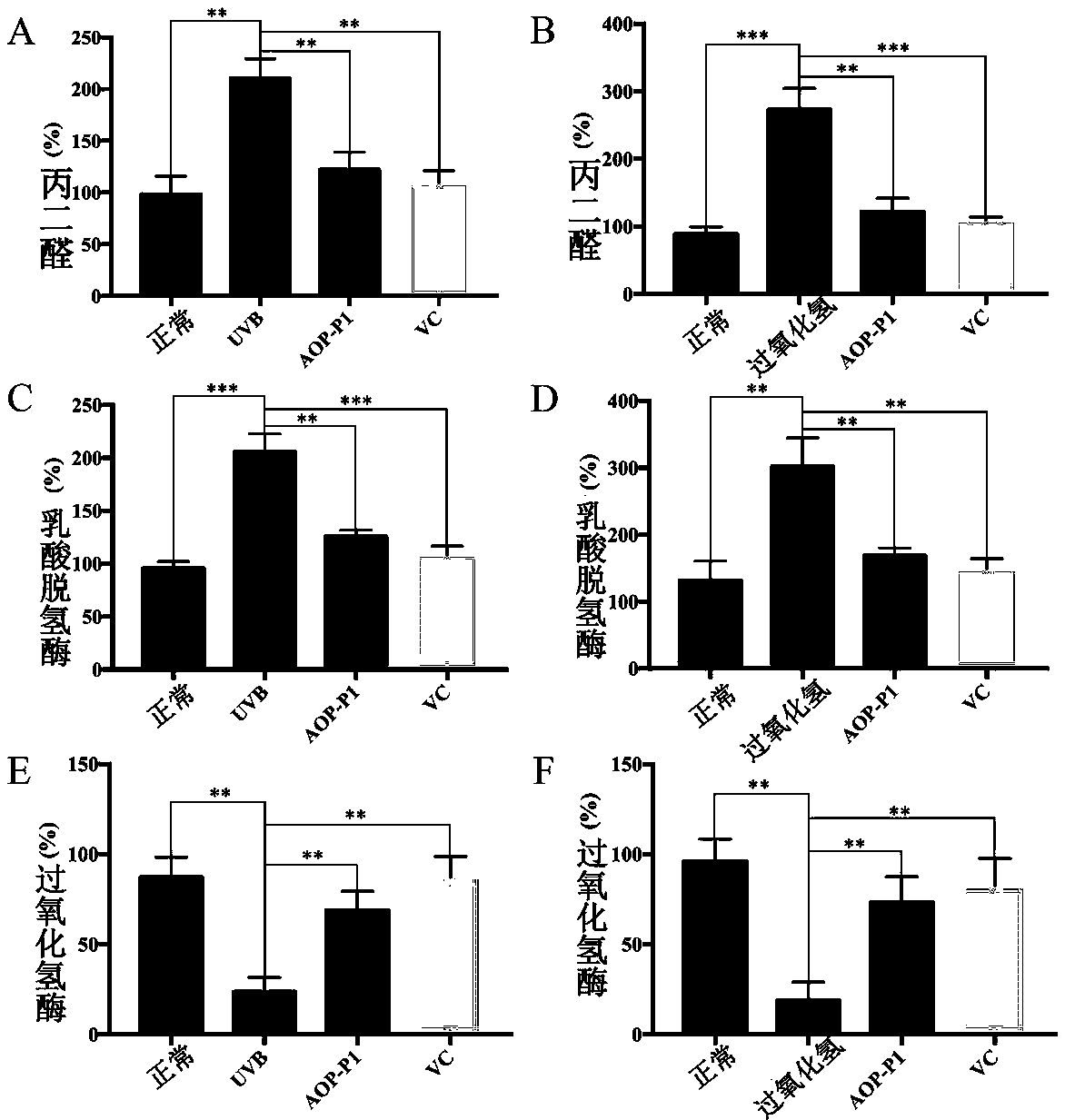Anti-oxidative injury skin-protection active polypeptide AOP-P1 and preparation method and application thereof
A technology of AOP-P1 and skin protection, applied in the field of biomedicine, can solve the problems of low activity, difficulty in large-scale synthesis, toxicity, carcinogenicity, and poor stability, and achieve high antioxidant activity, great medical application prospects, and high stability Effect
- Summary
- Abstract
- Description
- Claims
- Application Information
AI Technical Summary
Problems solved by technology
Method used
Image
Examples
preparation example Construction
[0021] The preparation method of the anti-oxidative damage skin protection active polypeptide AOP-P1 of the present invention comprises the following steps:
[0022] A. Take the skin secretion of the Yunnan stink frog by electrical stimulation, dissolve it in Tris-HCl, freeze-dry it in vacuum to obtain material a, and store it at -80°C for later use;
[0023] B. Dissolving material a in water to obtain material b, material b is eluted and fractionated to obtain sample c;
[0024] C. The sample c is subjected to high-performance liquid chromatography reversed-phase chromatography to obtain the target anti-oxidative damage skin protection active polypeptide AOP-P1.
[0025] The water described in the B step is deionized water.
[0026] The elution described in step B was eluted on a Sephadex G-75 gel filtration column with TriS-HCl (pH 7.8) mixed with NaCl as the elution buffer.
[0027] The fractionation described in step B is to use an automatic split collector to collect fr...
Embodiment 1
[0032] 1. Sample Collection and Animal Care
[0033] Adult yunnanensis frogs were collected from Lijiang City, Yunnan Province and transported safely to the laboratory. The stink frogs were housed en masse in containers with mealworms ready for consumption by the stink frogs. After acclimating to the environment for a week, the frog skin was stimulated with an electric massager with 6 volts alternating current. Then wash the skin secretions of the stink frog with Tris-HCl buffer (pH7.8). The obtained secretion was centrifuged at 4000 g for 15 min (4 °C), and the supernatant was collected and lyophilized. All samples were stored at -80°C until further analysis.
[0034] 2. Purification procedure
[0035] Freeze-dried skin secretion samples were dissolved in deionized water and applied to a Sephadex G-75 gel filtration column, and eluted with TriS-HCl (pH 7.8) mixed with NaCl as the elution buffer. Fractions were collected every 10 min using an automated fraction collector ...
PUM
 Login to View More
Login to View More Abstract
Description
Claims
Application Information
 Login to View More
Login to View More - R&D
- Intellectual Property
- Life Sciences
- Materials
- Tech Scout
- Unparalleled Data Quality
- Higher Quality Content
- 60% Fewer Hallucinations
Browse by: Latest US Patents, China's latest patents, Technical Efficacy Thesaurus, Application Domain, Technology Topic, Popular Technical Reports.
© 2025 PatSnap. All rights reserved.Legal|Privacy policy|Modern Slavery Act Transparency Statement|Sitemap|About US| Contact US: help@patsnap.com



